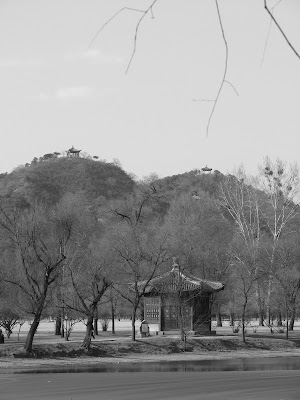A Delayed Post: Chengde
Chengde is best known as the summer residence of the early Qing Dynasty emperors.
Pictured below is Mountain Resort(Chinese: 避暑山庄; pinyin: Bìshǔ Shānzhuāng; literally: Mountain Resort for Avoiding the Heat)--the world's largest existing imperial garden.
Built between 1703 and 1792, the Mountain Resort took 89 years to complete. It covers a total area of 5.6 km². It is a vast complex of palaces and administrative and ceremonial buildings. Temples of various architectural styles and imperial gardens blend harmoniously into a landscape of lakes, pastureland and forests.
The Kangxi, Qianlong and Jiaqing Emperors often spent several months a year here to escape the summer heat in the capital city of Beijing and the palace zone in the southern part of the resort was therefore designed to resemble the Forbidden City in Beijing. It consists of two parts: a court in front, where the emperor received high officials, nobles of various minority nationalities, and foreign envoys; and bed chambers in the rear, which were the imperial family's living quarters.
Traditional Chinese guard lions (sometimes dogs) which sit at the front gate of many Chinese palaces:

Stone tablets used to record historic events within the palace:

A living Bambi (there was a whole herd of them who roamed the palace grounds freely):






After our visit to the Mountain Resort we stopped by a paper cutting shop--much more impressive than your classic paper dolls.

Outside the Mountain Resort walls are Eight Outer Temples, built in varying architectural styles drawn from throughout China. The most impressive of these is the Putuo Zongcheng (普陀宗乘, Pinyin: Pǔtuó Zōngchéng) (pictured below) built to resemble Potala Palace in Lhasa, Tibet.



Below are pictures from another temple we visited later in the day. If Derek had been able to make the trip, we could have secured our love for eternity for just 50RMB ($6.49)--a wise investment:






















